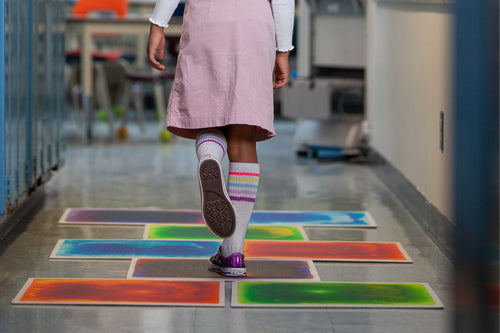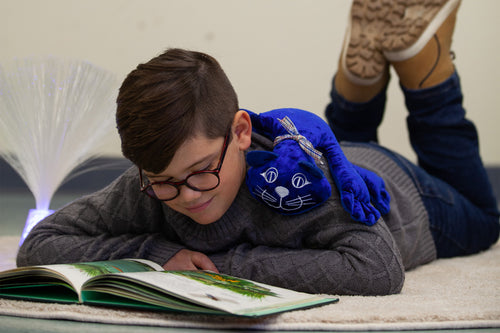In my life as a mom, I try to consciously to choose material that is really worth it. To decrease my clutter, I’m a little picky about what I let into my house. I only keep what has a real impact on a daily basis. This is the case for the Time Timer, which I have been using every week (sometimes every day!) for about 5 years.
Recently, it broke and it was then that I realized how much I had developed using it automatically. I finally bought a newer and more solid version (because I have young children) after depriving myself of it for a few months. I’m so happy to have it back in my house. Here's why.
Facilitating Transitions and Routines
Since the Time Timer offers a visual clue (the amount of red remaining), it allows all children to use it, even if they have not yet acquired the concept of time or understanding numbers.

So, for example, this is a good way to determine the time remaining before a transition. At home, I’ll take 5 or 10 minutes when it’s time to get dressed to go outside.
I suggest to the kids that we work as a team “against” the timer to get dressed before it sounds. Sometimes I will also use music, our clothing song or some other technique.
My goal is that after getting dressed, the children will come out with a feeling of competence and pride. In order for them to have success, I always plan a realistic and generous length of time, especially for the first time.
You can use a whiteboard or pictures to remind children what to do during the time displayed.

Fostering Independence
At other times, children have to do a task for themselves that is time-limited. My daughter likes it when I put her timer on the counter while she takes a shower. Although she has enough independence to shower alone, she tends to sing, daydream and forget to start cleaning. She doesn’t see the time passing and then she’s disappointed to run out of time to play once her shower is over. Therefore, we determined together the number of minutes that would allow her to enjoy her shower without spending the evening there.

The visual timer allows her to check at a glance if she should soap herself before reaching the time to get out (or the cold water starts - haha). It’s a good compromise to give her privacy (since I don’t need to go and remind her to get out) while meeting the need for outside help to identify the passage of time.
It’s following the same principle that I use it to illustrate the time during which bread must be kneaded. In my opinion, using it in positive situations (like making bread) helps the timer to be associated as a positive tool rather than creating anxiety.
Demonstrating a Limit
In positive behavior support, there is an idea that rather than trying to force the child to do something, we focus on what we want to do.
For example: rather than threatening the child that he will have no stories if he doesn’t put on his pajamas quickly, we can explain to him that we will start reading the story in 10 minutes, whether ready or not.
In this situation, the Time Timer can be a visual reminder of the time that passes for the child. Rather than being the one doing the counting, we let the child realize for himself how time goes by and the consequences his choice has on it.















Leave a comment